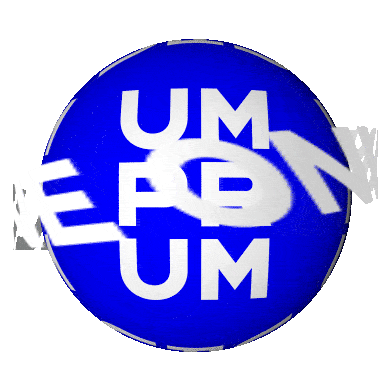


“Working on the metro is my passion,“
says architect Anna Švarc
Series: How are UMPRUM
graduates faring abroad
Successful UMPRUM graduates
They design furniture, paint, create fonts, and design clothes. Read interviews with UMPRUM graduates about their academic and professional experiences at home and abroad.
Anna Švarc studied at the Architecture II Studio at UMPRUM under the guidance of Prof. Eva Jiřičná and Ivan Kroupa. She currently works for the Prague Metro. Specifically, she is responsible for the visual style and aesthetics of the newly reconstructed and built stations and for integrating contemporary art into the metro.
She used the opportunities offered by studying at UMPRUM intensively. In addition to her work in the studio, she has also been on study and work internships abroad.
Why does she think foreign experience is so important for young people? How did she end up working for the Metro? And why she doesn’t condemn graffiti?
What is your favourite memory from UMPRUM?
My favourite memories are of the studios. After studying at an English high school, UMPRUM was a liberation for me. I met people here who were cut from the same cloth. Motherhood aside, it was the best six years of my life.
You've had a lot of experience living abroad before. What did the Erasmus internship give you?
In my 3rd year, I went on an ERASMUS internship in Berlin at the UDK (Universität der Künste), where Wiel Arets was the head of the studio at the time. I was influenced not only by my studies there but also by life in a big multicultural city. It was a kind of open window for me, but I also became aware of the qualities of my own world - the world of Prague. Probably the most important thing was coming back when I reviewed my values and goals.
Did you notice any differences between the methods of working and studying at UMPRUM compared to the UDK?
In Berlin, we worked on the project in a group. It didn't work that way at UMPRUM, here the assignments were more individual and free. At UDK I learned how to cooperate with other people. It wasn't such a free creative process, but it was great preparation for practice and reflected reality well. On the other hand, I also appreciated the experience of creating, where one can reach the edge of a concept and not be so burdened by, for example, a budget.
In addition to study internships, the school also offers work internships. You got into the prestigious OMA studio of Dutch architect Rem Koolhaas. What did you take away?
It was a great experience and it was very satisfying to see all the projects come to fruition. Having insight into a large office and seeing some of the toxicity involved was also very interesting. For a student or a young person, submitting to an office job is probably fine. When a person is studying, it is good if they get a kind of stress test. It is necessary to understand the context of one's field and where the boundaries are. As they say, what doesn't kill you makes you stronger.
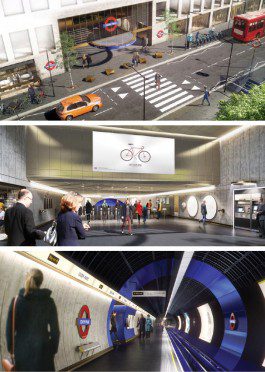
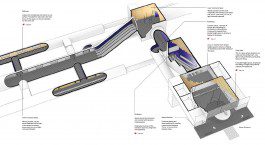
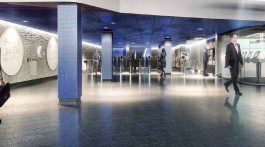
Studio Egret West – Design Manual for the London Underground – examples of how to apply the manual in typical station areas
You then worked in England for a few years. What kind of experiences did you gain there?
I started in the architectural studio of Eva Jiřičná. It was a smaller studio and I spent a year and a half there. Then I tried working in a studio that dealt with much bigger projects and finally, I ended up in Studio Egret West. That was a great studio, and I worked with a team, which is something that I miss in my current job. There was also a great work culture and, that's an important foundation for an institution to function well. I would compare it to music, in a great bar, if the music is bad, it doesn't work.
Studio Egret West was already focusing on the architecture and visual style of the metro. How did you manage to get there with no previous experience?
They were interested in my curiosity in graffiti, which in the "old days" had a greater and, one could say, better quality overlap with the underground metro. Nowadays, surveillance of the metro space is more sophisticated, only abbreviated tags without much artistic value can be seen. To this day, I watch with interest how the graffiti scene slowly moves into galleries, but often burns what is most genuine about it.
What specifically were you responsible for at Egret West?
I did a kind of all-encompassing design manual for the London Underground, covering architecture, design, art, lighting, advertising, etc. It's a huge underground with lots of different stations in different styles. My job was to categorise everything and formulate principles of practice when renovating existing stations or designing new ones. This work confirmed for me how important manuals are for the stability and compact clarity of complex systems. Yes, there may be some immortal supermanager who has it all in their head and always knows the optimal answer for a particular situation, but at a certain scale that is no longer a sustainable approach.
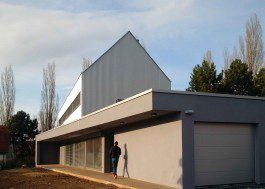
Realization of a family house in Řež
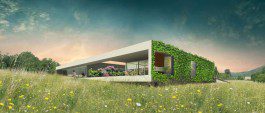
Study of a family house in Třebenice
After returning from London, you came across an advert for the Prague Institute of Planning and Development. This was the beginning of your work for the Prague metro.
Yes. Now I work directly for the Prague Transport Company. Moreover, the new route D is only a small part of my work. I'm mainly responsible for overseeing the aesthetic quality of existing and new metro stations and integrating contemporary architecture, design, and art into the existing system as much as possible. Most importantly, I would consider promoting the practice of architectural and art competitions and formulating their briefs. When something as significant as construction is underway, whether it's the result of a designer competing for the price of the overall contract. The moment the design is completed in one of the design phases, it's my job to comment on it. I'm also working on a manual for regulating advertising in the subway, whether conventional advertising or, for example, signage for station amenities. I am also in charge of looking after existing artworks or promoting the creation of new artworks within the metro.
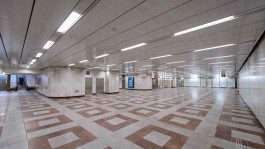
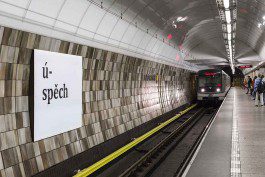
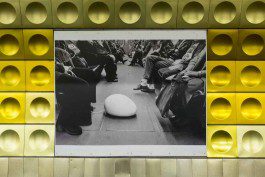
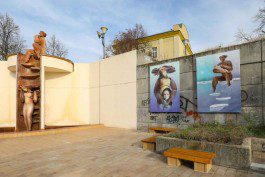
1 – Reconstruction of Anděl station - exit to Knížecí
2 – Project in collaboration with GHMP - Artists Crossing the Line – Timo
3 – Project in collaboration with GHMP - Artists Crossing the Line – Kryštof Kintera
4 – Project in cooperation with GHMP – Vltavská gallery – Markéta Magidová and Karina Kottová
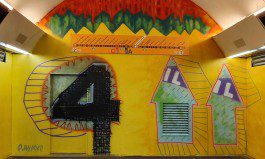
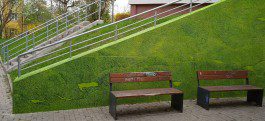
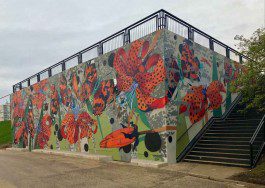

1 – Murals on the temporary walls of the elevator construction at Karlovo Náměstí station – Jan Miko
2 – Project in cooperation with GHMP – mural Bořislavka – Veronika Zapletalová
3 – Project in collaboration with GHMP – the past future exhibition – Adam Tureček
4 – Mural at Opatov station – Štěpán Rubáš
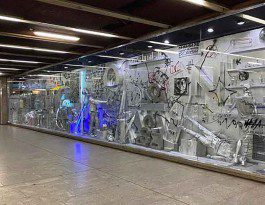
Implementation of the Mega gallery - exhibition by Michal Škapa
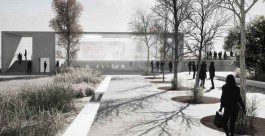
Winning design of the architectural competition for the new Depo Zličín station - Petr Stolín architects
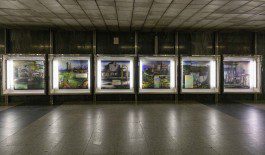
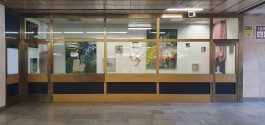
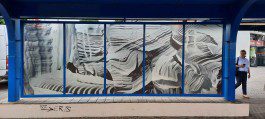
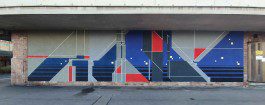
1 – Project in collaboration with GHMP – metamorph festival
2 – Realization at Hidden Gallery – exhibition by Viktoria D´agostino and Elizabeta Vuova
3 – Project in collaboration with GHMP – mural Nové Butovice – ZEB ONE
4 – Project in cooperation with Prague 7 – prints for tram stops – Jakub Tytykalo
What advice would you give current students?
To believe in themselves, to not be afraid to try to realize their plans, and to take advantage of what is offered to them. I think the fact that they are applying to UMPRUM speaks of a certain level of healthy self-confidence. No doubt to go out and work abroad. Self-reflection is important, as well as fresh information and a more objective view of the world.
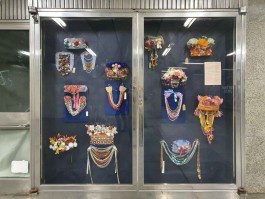
Realization of Okénko gallery – a project by the Elpida program
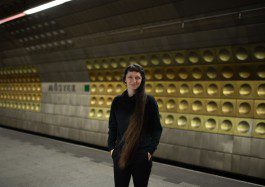
Anna Švarc (born Přibylová) (*1984) spent part of her childhood in Egypt and Ukraine. She studied at an English high school and then at UMPRUM in the Architecture II Studio, which was led by architect Eva Jiřičná, and after her departure by Ivan Kroupa. She graduated from the studio in 2011. After graduation, she undertook work internships in the Netherlands and Germany. She lived in London for several years, where she worked at Eva Jiřičná Architects, Lifschutz Davidson Sandilands, and Egret West. In London, she fell under the spell of the underground metro and started working for it. She eventually returned to the Czech Republic for her partner and family. She briefly worked for the Prague Institute of Planning and Development. In 2019, she joined the Prague Transport Company. She focuses on improving the current appearance of the metro and the visual style of the new D-line stations.
Interview conducted by Kamila Stehlíková
Interviews with successful UMPRUM graduates took place within the framework of the Czech Presidency's Played Priorities project, supported by the Centralized Development Projects of The Ministry of Education, Youth and Sports MŠMT of the Czech Republic.